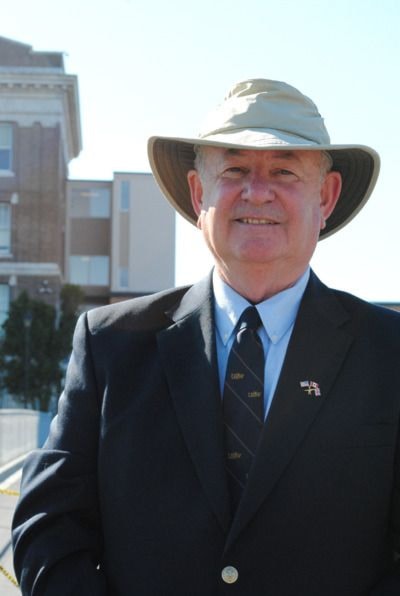Residents urge Vic High to choose memorial carefully
When Ray Travers first heard the wartime memorial trees at Vic High had been cut down back in March, he was devastated. Travers, now 69, lost both his grandfathers in the First World War and watched the grief affect his parents for years. He keeps other figures close to his heart, too, like the fact that 82 Vic High students and three school staff were taken by the war.
So, to Travers, the act of replacing the trees — something that Vic High agreed to soon after the removal — isn’t the only responsibility the school holds: it’s also imperative to choose the right tree. When it comes to right, however, Travers and Vic High are growing in separate directions.
“The trees in the Roads of Remembrance we see across Canada hold three purposes,” says Travers, a member of the Western Front Association, a memorial organization dedicated to the First World War. “To show the victory of life over death, to illustrate the symbolism of soldiers marching together and to act as a place families can come to mourn their losses.”
Those roads, which can be seen at locations across the country, have traditionally used a variety of tree species either symbolic or native to the area. Elms were a popular choice after the turn of the century, but their susceptibility to Dutch elm disease wiped out many memorial strips across Canada. The 14 silver maple trees at Vic High were planted in 1917. Over 2,500 people attended the dedication ceremony, and the trees remained in place until the high school was undergoing construction to implement a new technical facility. Due to reported age and damage, the trees were removed.
Community members, including Travers and Western Front Association, flooded School District 61 with messages of concern and sadness over the removal. Vic High agreed to replace the trees in a new location a few feet from the old memorial. However, the school has chosen to replace the trees with red maples — trees that Travers says are every bit as vulnerable as the silver version. Now, he is urging the school to choose resilient trees that won’t risk future removal or disease: oaks — specifically, the Victoria native Garry oak.
“All of this matters, but some people need to be reminded of that,” says Travers, who has a background in forestry. “There’s no perfect tree, but the Garry oak is indigenous to the area, and it’s hardy in our climate and soil. We’re coming up on the 100-year anniversary of WWI, and we have to think long-term here, at least 200 years … these trees are meant to act as memorials of hope, not ones that will have to be removed again.”
Seamus Howley, director of facilities with Greater Victoria School District, says he’s disappointed that so much energy is being spent arguing over the choice of tree, and wants to emphasize that the important point is that the school has agreed to act quickly to resurrect the memorial.
“Based on the arbour report, the trees had to be removed … I can’t stress enough how unfortunate it is we’re spending this kind of time over what kind of tree we should have there,” he says. “I respectfully suggest this is just another man’s opinion, and what should be noted is that we are going to replace and rededicate the trees.”
Howley says the school board is choosing the columnar red maple based on its obvious symbolism with the Canadian flag, colourful aesthetics, growth rate and life expectancy. While Howley cites that expectancy as 150 years, Travers argues that is an exaggeration, based on the previous maples only lasting 94 years. Howley, however, emphasizes that this choice — and the ongoing maintenance of the trees — will be up to the school. Currently, the replacement ceremony is scheduled for Nov. 10, and the trees have been ordered from a Vancouver nursery.
Travers and Western Front Association met with the Vic High Alumni Association and the school board on Monday, Sept. 12, in an effort to make a final plea. The Western Front Association and Travers himself has offered to contribute to a maintenance fund to promote the longevity of the trees. Approximately half the board present was receptive to Travers’ suggestions about Oaks, as were community members at the meeting.
“My main concern is that nothing will happen, or it won’t happen in time,” says Travers. “They don’t get it, but choosing a fragile tree species is more costly and heartbreaking in the long run. The idea is ‘Lest We Forget,’ but I think we are forgetting about who this is really for.” M
